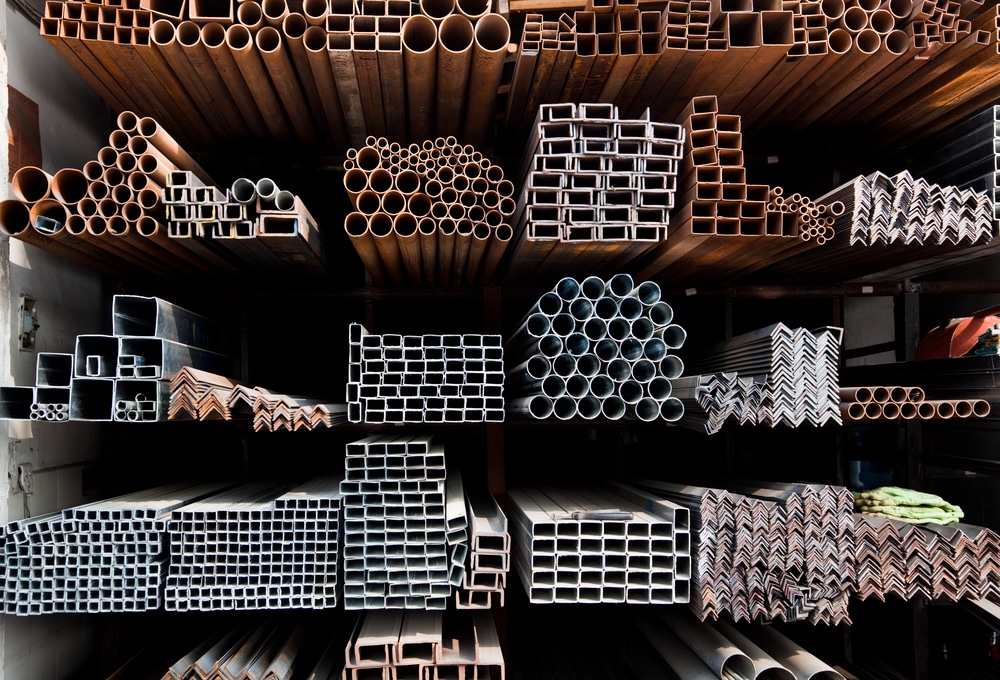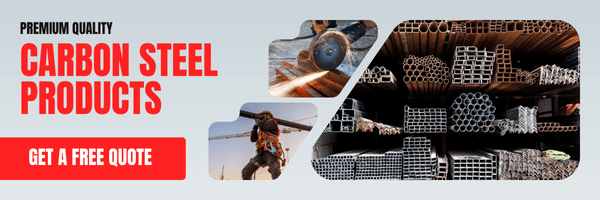What are Ferrous Metals? Definition & Examples
May 29, 2024 | Categorized in: Properties

Metals, such as steel, can be classified into many different categories based on their unique properties. They may vary in strength, durability, density, melting points, and composition, all of which are important when picking the best material for the job. However, one of the most essential ways to classify metals is whether they are ferrous or non-ferrous.
In this article, we’ll share what you need to know about ferrous metals, as well as their unique properties. Find out the properties of ferrous materials and how these metals are being used in a wide variety of industries.
What is Ferrous Metal?
Ferrous materials are metals that contain iron as their main element. Ferrous metals are best known and used for their strength, durability, and magnetic properties. Trace amounts of iron are not enough to make these metals possess the same properties as ferrous materials. Typically, the composition has to be at least 50% iron (by weight).

Properties of Ferrous Metals
It can be challenging to list out the most common properties of ferrous metals as they can be quite different from one another due to added alloys. That being said, beyond containing at least 50% iron, there are still generalizations that can be made regarding the properties of ferrous metals.
- Magnetic: Due to the arrangement of iron atoms, many ferrous metals are magnetic, making them an ideal choice for motors.
- Strength: Ferrous metals offer superior strength over non-ferrous metals such as copper or tin, which is why they are often used in structural steel projects.
- Durability: Compared to non-ferrous materials, ferrous metals can withstand significant wear and tear contributing to their longevity in infrastructure projects such as bridges.
- Cost: Generally, non-ferrous metals tend to be more expensive than ferrous metals due to factors such as scarcity, higher melting points, and more intricate extraction methods.
- Malleability and Ductility: Depending on their alloying composition or processing methods, ferrous metals vary widely. For example, low-carbon steel is more pliable and flexible than high-carbon steel, which contains more iron and is usually stronger, but less ductile.
Examples of Ferrous Metals
From carbon steel to wrought iron, there are several examples of iron-based metals that are essential to our daily existence. For starters, steel is one of the most widely used ferrous metals, and is crucial among so many industries. It’s the backbone of modern construction, supporting the buildings we work in, and it’s even used to strengthen the agricultural equipment that provides us with food. Here are more examples of ferrous materials and some of the ways they’re used.
1. Carbon Steel
Carbon steel is the most fundamental type of steel and is a necessary material for some of the biggest industries such as constructing skyscrapers and bridges to manufacturing machinery and tools. Generally, carbon steel is classified depending on its carbon content which can range from .3% to 2%.
2. Alloy Steel
Alloy steel is a specialized type of ferrous metal with additional elements such as chromium, nickel, molybdenum, or vanadium added in varying amounts typically ranging from 1% to 50% by weight. By incorporating these alloys, the properties of steel can be further tailored to fit specific use cases.
3. Cast Iron
Cast iron, while highly brittle, is a ferrous metal with incredible heat retention properties making it great for use in automotive brake pads and cookware. With a high carbon content that typically ranges from 2-4%, plus traces of silicon, cast iron is prone to crack under stress which limits its versatility.
4. Stainless Steel
Stainless steel is an iron-based alloy made with at least 10.5% chromium, and sometimes additional elements such as nickel making it one of the most costly ferrous metals. The added chromium, however, forms a protective layer on the surface making it popular for use in places with high hygiene standards such as hospitals and restaurants.
5. Wrought Iron
Finally, wrought iron is a type of ferrous metal with extremely low carbon content (usually less than 0.08%) and small amounts of impurities such as phosphorus, silicon, and/or sulfur. Used historically for decoration, it’s repeatedly heated and hammered during the shaping and forming processes. This characteristic is why wrought iron is valued most for its malleability, and ductility, as well as its resistance to corrosion and rust.
Get the Steel You Need Today!
If you’re looking for strong ferrous metal for your project, there’s no better option than carbon steel. This iron-based metal is known to be one of the strongest and most versatile materials on the planet, ideal for a wide range of applications and industries. We stock a massive, ready-to-ship inventory of high-quality steel, so request a quote or give us a call today!
